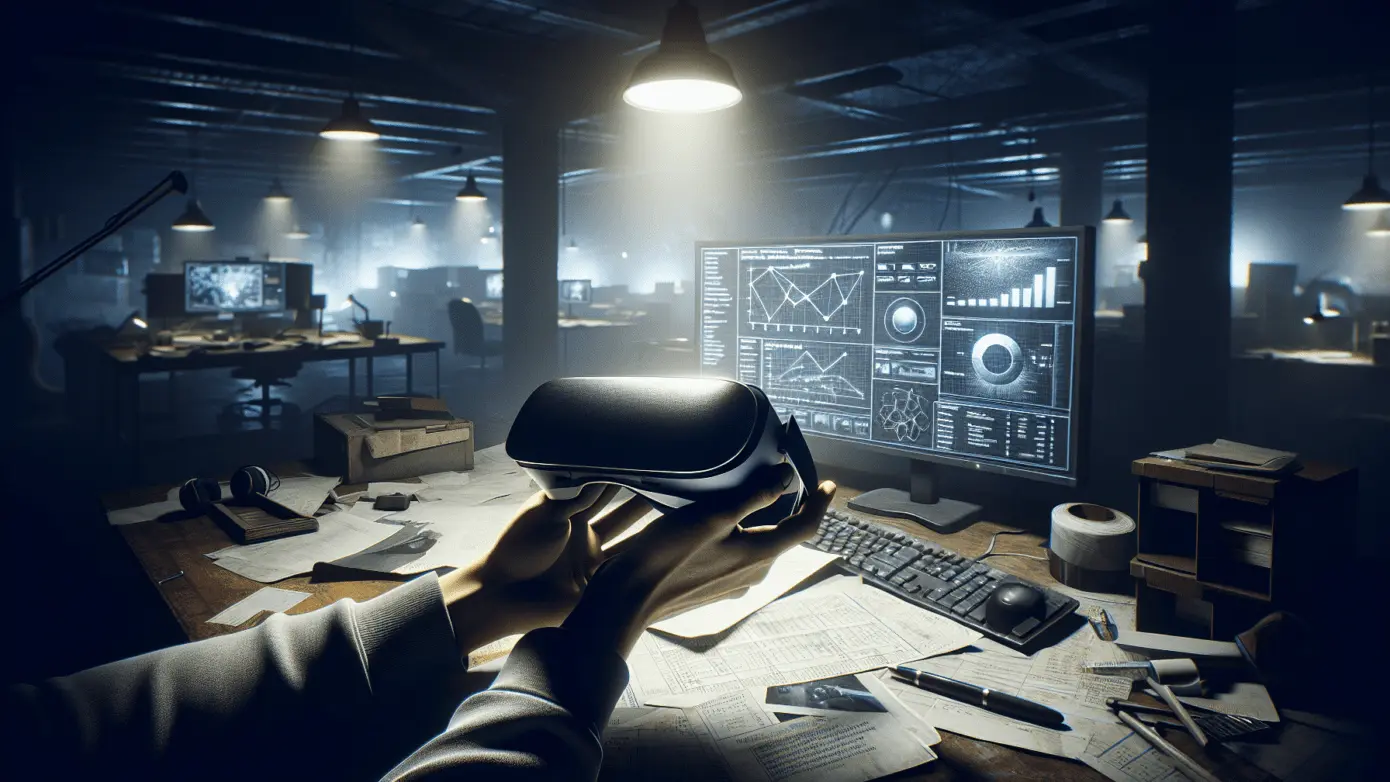Evolution and Impact of Digital Storytelling Through VR
Did you know stories changed over time? Sure, they were just words at one point. Now, there’s more. We have digital storytelling. Wow, what a time to live in! And it’s getting better. We can now live these tales, thanks to Virtual Reality (VR).
Traditional Storytelling vs Digital Storytelling
Let’s take a ride back memory lane and note changes. Initially, storytelling was simple. It was either one person speaking or one person writing. Now, it’s a whole world. Digital storytelling came and burst the bubble. We are no longer just listeners or readers. We’re part of the story. How cool! VR makes stories a reality, we feel, we hear, we see. This shift has made our time with stories different. They engage us more and are created differently.
Milestones in Digital Storytelling
Think about the milestones in this field, it’s mind-blowing. Remember when digital storytelling was just limited to screens and devices? Well, VR changed the game. Stories live around us. We partake in them. We are a part of the script. Isn’t that amazing? Looking back, digital storytelling has morphed from simple words to a traipse across worlds. I can’t wait to see what’s next.
Basics and Effects of Virtual Reality in Storytelling
Virtual reality, known as VR, changes how we share tales. VR lets us live the story, not just hear it. This immersive form of storytelling has the power to change our lives with each tale. Indeed, VR brings the audience into the story itself.
What is Virtual Reality?
VR is the use of computer tech to create a simulated world. Unlike typical user interfaces, VR places the user inside an experience instead of viewing it on a screen. VR bridges the gap between us and the story. We become part of the story. What was once told, we now live.
VR’s Role in Storytelling
With VR, storytelling gets a major boost. We don’t just view stories, we get to live them. Here’s how:
- VR heightens immersion: Stories gain depth and make us feel like part of it.
- VR emotional contagion: We feel the joy, sorrow, or fright of the characters we embody.
- VR senses synergy: Visuals and sounds become more real, enhancing the user’s experience.
So, VR is not just telling or showing a story; it’s more about stepping into one. Thus, tying us to the tale in ways that no other medium can. How amazing is that!
VR’s Influence on Digital Storytelling
Virtual Reality (VR) has changed digital storytelling. How has it done this? By making us part of the story. It warps the line between observer and actor. It places you directly into the story.
VR’s Transformational Role
In VR, you are not just watching, you’re living the narrative. Before, storytelling was a one-way street. The narrator shared the story, you listened. Now, it’s interactive. You’re part of it, you influence it. It’s a two-way street, a new dynamic.
Current Trends in VR
Recent trends? VR story worlds. These are immersive environments where you make choices. It’s role-play on steroids! This hot trend takes us into the story like never before. It’s thrilling, it’s creative, it’s, beyond doubt, the future of storytelling.
Remember, VR doesn’t just tell stories. It makes us part of them!
Review Summary=
In short, digital storytelling has changed. Thanks to VR, we’re part of the story. It’s thrilling, but it’s new. High costs and tech hurdles are challenges. The future though? More immersive story worlds. Our case study shows the amazing promise of VR in today’s storytelling.
Challenges and Future of VR Implementation in Storytelling
Telling stories with VR is tricky. It costs a lot. Skills for VR aren’t common. There are tech challenges, too. But VR storytelling has a bright future. There will be more tech to help. We can solve the current problems. I see a world where VR is in all digital stories.
Major Challenges with VR Implementation
Three big hurdles exist in VR tales. First, VR gear and software are not cheap. Second, you need unique skills to work with VR. It’s not like using a phone or PC. Third, the tech isn’t perfect. Glitches and gear issues can ruin a story.
The Future of VR in Storytelling
I see VR growing in digital stories. Costs will go down. There will be more people who can use VR. And the tech? It will get better. VR in storytelling will be like the switch from black and white to color TV. Future stories will pull us in like never before. These trends are not far off. The future of storytelling lies within the realm of VR. It isn’t a “what if”. It’s a “when”.
Detailed Case Study: VR’s Application in Digital Storytelling
Here’s a real-life example of VR in action.
Case Study Summary
A famed film studio faced a challenge. They had a hard time bringing their viewers into their magical world. A solution was sought – Enter VR.
VR’s Role in the Case Study
Using custom-designed VR headsets, they let their audience “step into” their stories. Viewers could now choose where to look and what to explore, gaining a 360-degree view. They were no longer just spectators.
Outcomes and Effectiveness
The result? More engaged viewership. Film buffs spoke of being a “part of the story”. They could experience the chill wind, see the vivid sights. Technical issues did arise, but they were solved swiftly. Was VR storytelling costly? Yes. Did the engagement and enjoyment level rise? Absolutely. VR opened a new dimension, proving its value in our case study.



Leave a Reply